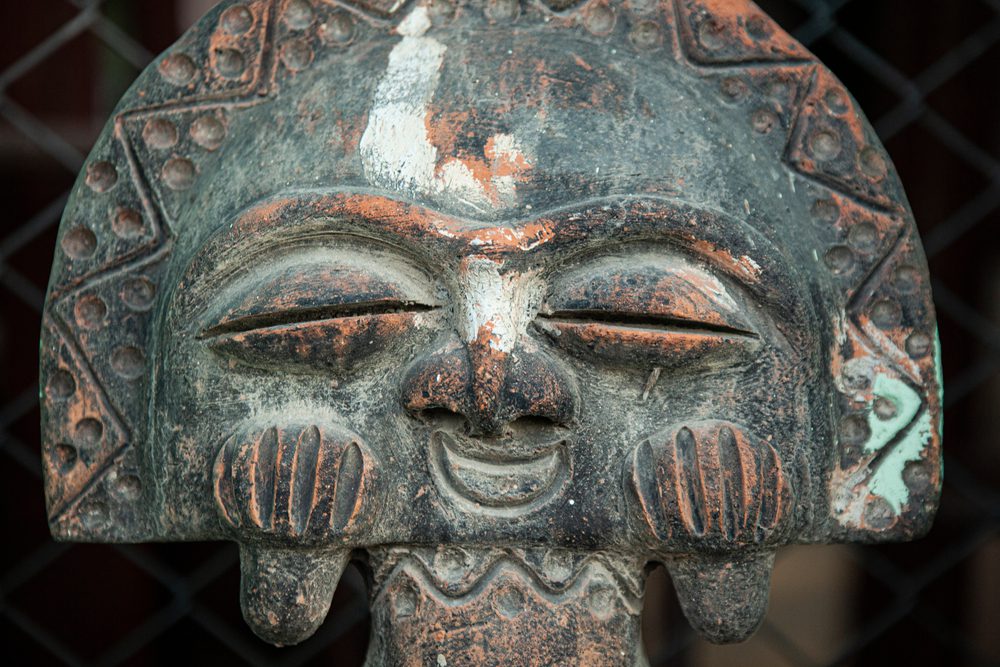
Historic Taíno statue. Image via Shutterstock/Filippo Carlot.
DNA evidence suggests that approximately 60% of modern Puerto Ricans have Taíno ancestry. Today, Taíno-derived customs can be found in the Caribbean, especially among rural communities, such as the jíbaros.
The Taíno people were the principal inhabitants of Puerto Rico and much of the Caribbean, when European explorers arrived in the late 15th century.
They were also the most culturally advanced group within the Arawak peoples, and had a well-developed social, religious, and political system, which held women in high regard.
While European colonization decimated nearly the entire Taíno population, its legacy endures in the customs, language, and genetic makeup of Puerto Ricans today.
These facts about the Taíno people give us a glimpse into their societal structure, daily lives, belief system, history, and cultural impact.
1. Women were highly respected. Taíno society was based on a matrilineal system, meaning that descent was traced through the mother. Women lived in village groups with their children, apart from men. As a result, Taíno women had extensive control over their lives. They also participated in all levels of the Taíno political hierarchy, even as cacicas (chiefs).
2. The Taínos worshiped zemis, which were deities or ancestral spirits housed in sculptural objects. Among the main zemis were Atabey—ruler of the moon, fresh waters, fertility, and natural disasters—and her son, Yúcahu—god of creation, the sky, the sea, bountiful harvest, and peace. The Taíno creation story says that humans emerged from caves in a sacred mountain on present-day Hispaniola.
3. Taíno society was structured into the following social classes: the caciques (chiefs), the nitaínos (nobles), the naborias (commoners), and the bohíques (priests and healers). Caciques, whether male or female, inherited their roles through their mother’s noble lineage.
4. The Taíno people didn’t call themselves Taíno. They referred to themselves by the name of their location. The term Taíno, coined by a European, derives from nitaíno, the name of an elite social class among the Taínos. It came to be known as “good” or “prudent” and was used to differentiate Taínos from the Caribs.
5. Some Taíno practiced polygamy. According to Ramón Pané, a Catholic friar who traveled with Columbus on his second voyage, caciques tended to have two or three spouses and the principal ones had as many as 20.
6. Taíno men and unmarried women didn’t wear clothing. Married women would wear a small cotton apron called a nagua. Women generally had long hair with bangs and adorned themselves with gold jewelry, shells, and paint.
7. Taínos lived in large circular buildings made of wood, straw, and palm leaves that could house 10-15 families each. The caciques and their families lived in rectangular buildings. Furnishings included hammocks, mats, wooden chairs, and cradles.
8. Taíno spoke an Arawakan language and wrote in petroglyphs. Spanish borrowed numerous words from Taíno, including batata, canoa, huracán, and hamaca.
9. Their diet consisted of vegetables, fruit, meat, and fish. They hunted lizards, turtles, birds, and manatees, and grew yuca, cassava, and sweet potato. The root vegetables were ground into flour for bread.
10. The Taíno people were the first Indigenous Americans encountered by Christopher Columbus, in the The Bahamas on Oct. 12, 1492. After their first interaction, Columbus described the Taínos as noble and kind.
In his diary, Columbus wrote:
“They traded with us and gave us everything they had, with good will … they took great delight in pleasing us … They are very gentle and without knowledge of what is evil; nor do they murder or steal…Your highness may believe that in all the world there can be no better people … They love their neighbors as themselves, and they have the sweetest talk in the world, and are gentle and always laughing.”
11. Despite the warm welcome from the Taínos, Columbus and his people abducted 24 Taínos and took them to Spain in 1494, according to “North American Exploration: A New World Disclosed,” by John Logan Allen.
Columbus also started to demand tributes of gold or cotton from the Taínos. If they could not deliver the tribute, the Spanish would cut off their hands off and leave them to bleed to death. The Taínos were also forced into slave labor. These cruel practices were the origin of many revolts.
12. Within 30 years of the arrival of Europeans, between 80% and 90% of the Taíno population died. While infectious disease was the main cause, famine, forced labor, and warfare also contributed to their depopulation.
13. DNA evidence suggests that approximately 60% of modern Puerto Ricans have Taíno ancestry, according to National Geographic. Today, Taíno-derived customs can be found in the Caribbean, especially among rural communities, such as the jíbaros.
14. There are several Taíno revivalist communities in the Caribbean and U.S. that are dedicated to reclaiming the indigenous group’s heritage and seeking official recognition of the survival of the Taíno people.
RELATED: 20 Fun, Quirky, and Fascinating Facts About Puerto Rico

Powerful art that mobilizes Gen Z: The “We The Future” campaign is inspiring new voters across America
When Amplifier executive director Cleo Barnett set out to reach Gen Z voters during the 2024 election, she knew she wanted to create a movement...

Puerto Rico’s Miss Universe 2024 costume celebrates jíbara heritage with modern twist
Colón said she is very excited about the dress theme because she remembers when she was a little girl, seeing Joyce Giraud wear a jíbara costume...

Jennifer Colón: ¿Será la sexta corona de Miss Universe para Puerto Rico?
El pasado junio, Colón hizo historia al convertirse en la primera Miss Puerto Rico Universe en ser madre, pues tiene tres hijos, y sobrepasar los...

Hate and harassment towards women spreads after Trump’s election
Over a 24-hour period following Trump’s election, there was a 4,600% increase in the usage of the phrase “your body, my choice” on X. The phrase has...




